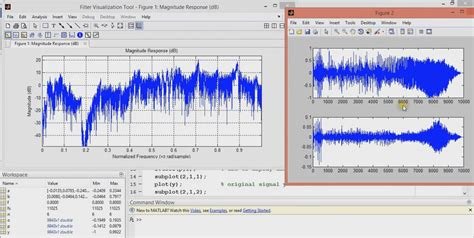Simulating Dynamic Systems in Matlab
If you’re interested in understanding and analyzing how dynamic systems behave, then simulation in Matlab could be a game-changer for you. In this blog post, we’ll explore the world of simulating dynamic systems using Matlab. We’ll start by giving you an introduction to what dynamic systems are and why simulating them is important. Then, we’ll dive into the process of modeling dynamic systems in Matlab, guiding you through the steps to create accurate and effective models. We’ll also discuss the various simulation methods available in Matlab and help you choose the most appropriate one for your specific needs. Once you’ve mastered the modeling and simulation process, we’ll show you how to implement and run simulations in Matlab. Finally, we’ll delve into the crucial step of analyzing and interpreting simulation results, giving you the tools to extract meaningful insights from your simulations. So, whether you’re a beginner or an experienced user, this comprehensive guide will help you harness the power of Matlab for simulating dynamic systems.
Introduction to simulating dynamic systems
Simulating dynamic systems involves creating mathematical models to represent the behavior of systems that change over time. These systems can be found in various fields such as engineering, economics, biology, and physics. The main goal of simulation is to understand, predict, and improve the behavior of these systems.
One of the key aspects of simulating dynamic systems is the use of Matlab as a simulation tool. This powerful software allows engineers and scientists to create and analyze complex models through numerical simulations. Understanding the basics of Matlab is essential for effectively simulating dynamic systems.
When beginning to simulate dynamic systems, it’s important to have a clear understanding of the system being modeled. This involves identifying the key variables, relationships, and dependencies that drive the system’s behavior. A thorough understanding of the system is crucial for developing an accurate and meaningful simulation model.
Overall, the introduction to simulating dynamic systems lays the foundation for understanding the importance of simulation in various fields and the role of Matlab in creating and analyzing dynamic system models. It is a crucial first step in the process of effectively simulating and improving the behavior of dynamic systems.
Modeling dynamic systems in Matlab
When it comes to modeling dynamic systems in Matlab, there are a variety of tools and techniques that can be used to accurately simulate real-world behavior. One of the most common approaches is to use mathematical equations to describe the relationships between different variables within the system. These equations can then be used to generate simulations that can help engineers and researchers better understand the system’s behavior.
Another approach to modeling dynamic systems in Matlab is to use Simulink, which is a graphical programming environment that allows users to build block diagrams to represent the system and its behavior. This can be a powerful tool for visualizing complex systems and testing different scenarios to see how they will respond.
It’s also important to consider the different types of systems that can be modeled in Matlab, such as mechanical, electrical, and thermal systems. Each of these types of systems has its own unique set of challenges and considerations when it comes to accurately modeling their dynamic behavior.
Overall, modeling dynamic systems in Matlab is a complex but essential process for anyone working in the fields of engineering, physics, or any other discipline that deals with complex systems. By using the tools and techniques available in Matlab, researchers and engineers can gain valuable insights into the behavior of these systems and make more informed decisions about how to design and control them.
Choosing the appropriate simulation method
When it comes to simulating dynamic systems, it is crucial to choose the appropriate simulation method. Different systems may require different approaches for accurate representation and analysis. One of the most common simulation methods is the Euler method, which is a simple and straightforward approach to approximating the behavior of dynamic systems. This method is widely used for its ease of implementation, but it may not always provide the most accurate results.
Another popular simulation method is the Runge-Kutta method, which is a more complex and accurate approach to simulating dynamic systems. This method is particularly useful for systems with complex dynamics and nonlinear behavior. It allows for better precision and control over the simulation process, but it may require more computational resources.
Choosing the appropriate simulation method depends on the specific characteristics of the dynamic system being modeled. Factors such as system complexity, nonlinearity, and desired level of accuracy should be taken into consideration when deciding on the most suitable simulation method. It is important to weigh the trade-offs between computational efficiency and accuracy to make an informed decision.
Ultimately, the goal of choosing the appropriate simulation method is to ensure that the simulated dynamic system accurately represents the real-world behavior and provides valuable insights for analysis and interpretation. By understanding the strengths and limitations of different simulation methods, engineers and researchers can make informed decisions to achieve their simulation objectives effectively.
Implementing simulations in Matlab
Simulating dynamic systems in Matlab is a complex process, but once you have the model and simulation method chosen, it’s time to actually implement the simulation. This involves writing the necessary code in Matlab to define the system, set up the parameters, and run the simulation.
When implementing simulations in Matlab, it’s important to start by translating the mathematical model of the dynamic system into code. This may involve defining differential equations, state-space representations, or transfer functions, depending on the nature of the system. It’s crucial to accurately capture the dynamics of the system in the code to ensure an accurate simulation.
Once the model is translated into code, the next step is to set up the simulation parameters. This may include specifying the simulation time span, the initial conditions of the system, the input signals, and any other relevant parameters. Paying close attention to these parameters is vital for obtaining meaningful simulation results.
After the model is coded and the simulation parameters are set, it’s time to run the simulation. This involves executing the Matlab script or function that contains the simulation code. The simulation will iterate through the specified time span, solving the system dynamics at each time step and producing the simulated output.
Analyzing and interpreting simulation results
Once the simulation of a dynamic system using Matlab has been completed, the next step is to analyze and interpret the results obtained. This involves examining the output data to gain insights into the behavior of the system under different conditions. One way to analyze the simulation results is to plot the data to visualize the system’s response over time. By plotting time-series data, trends and patterns in the system’s behavior can be identified.
Another important aspect of analyzing simulation results is to compare the simulated output with real-world data or theoretical expectations. This helps to validate the model and ensure that it accurately represents the actual system being studied. By conducting statistical analysis on the simulation results, it is possible to quantitatively assess the accuracy and reliability of the model.
Interpreting the simulation results involves drawing conclusions based on the analysis conducted. This may include identifying the key factors that influence the system’s behavior, evaluating the impact of different parameters on the system’s performance, and making predictions about the system’s future behavior. By interpreting the simulation results, valuable insights can be gained that can inform decision-making and improve the understanding of the dynamic system being studied.
In conclusion, analyzing and interpreting simulation results is a crucial step in the process of simulating dynamic systems. It allows researchers and engineers to gain valuable insights into the behavior of complex systems, validate the accuracy of simulation models, and make informed decisions based on the results obtained. By leveraging the power of Matlab for simulation and analysis, new discoveries and innovations can be made in a wide range of fields, from engineering and physics to biology and finance.


